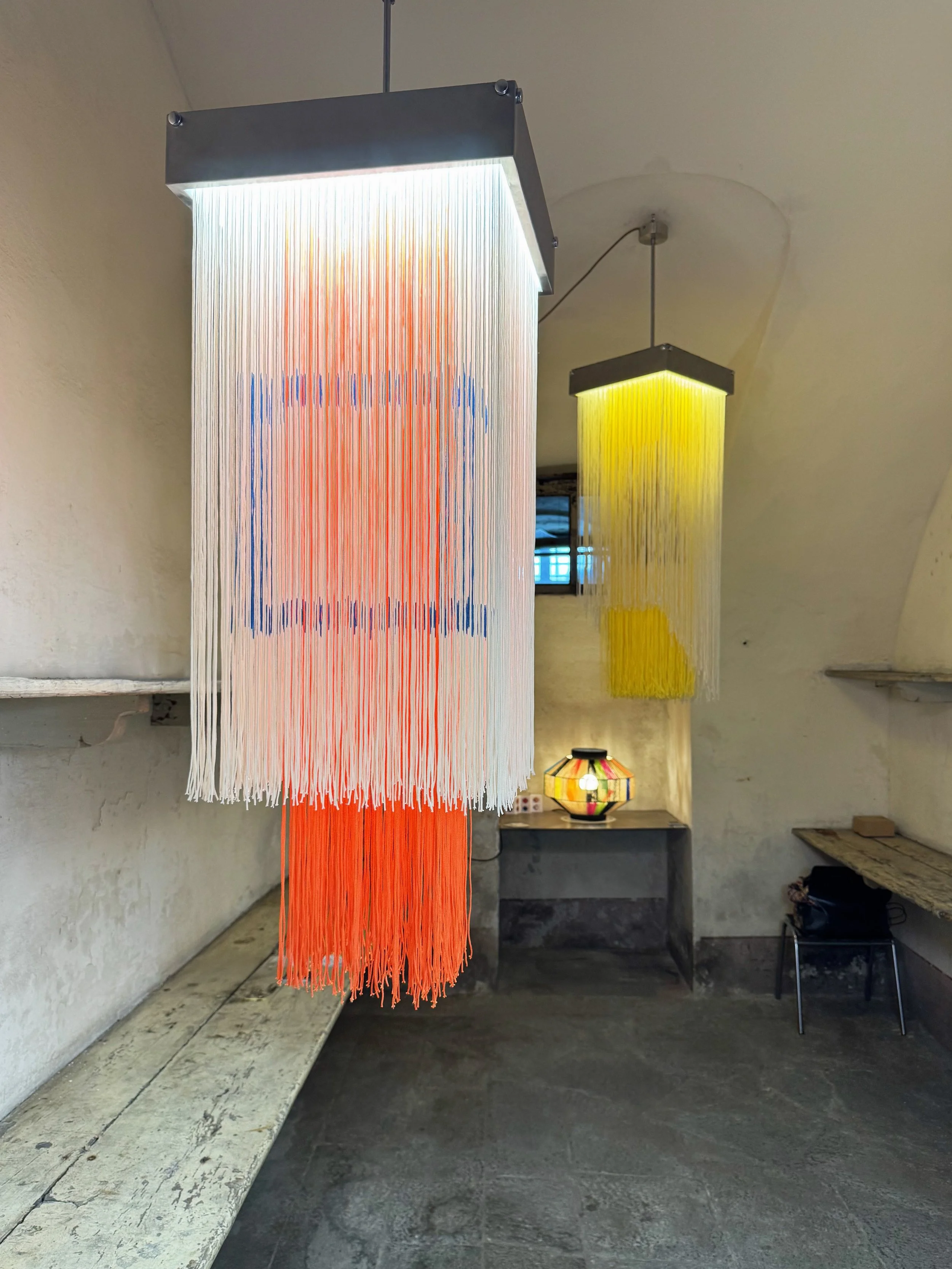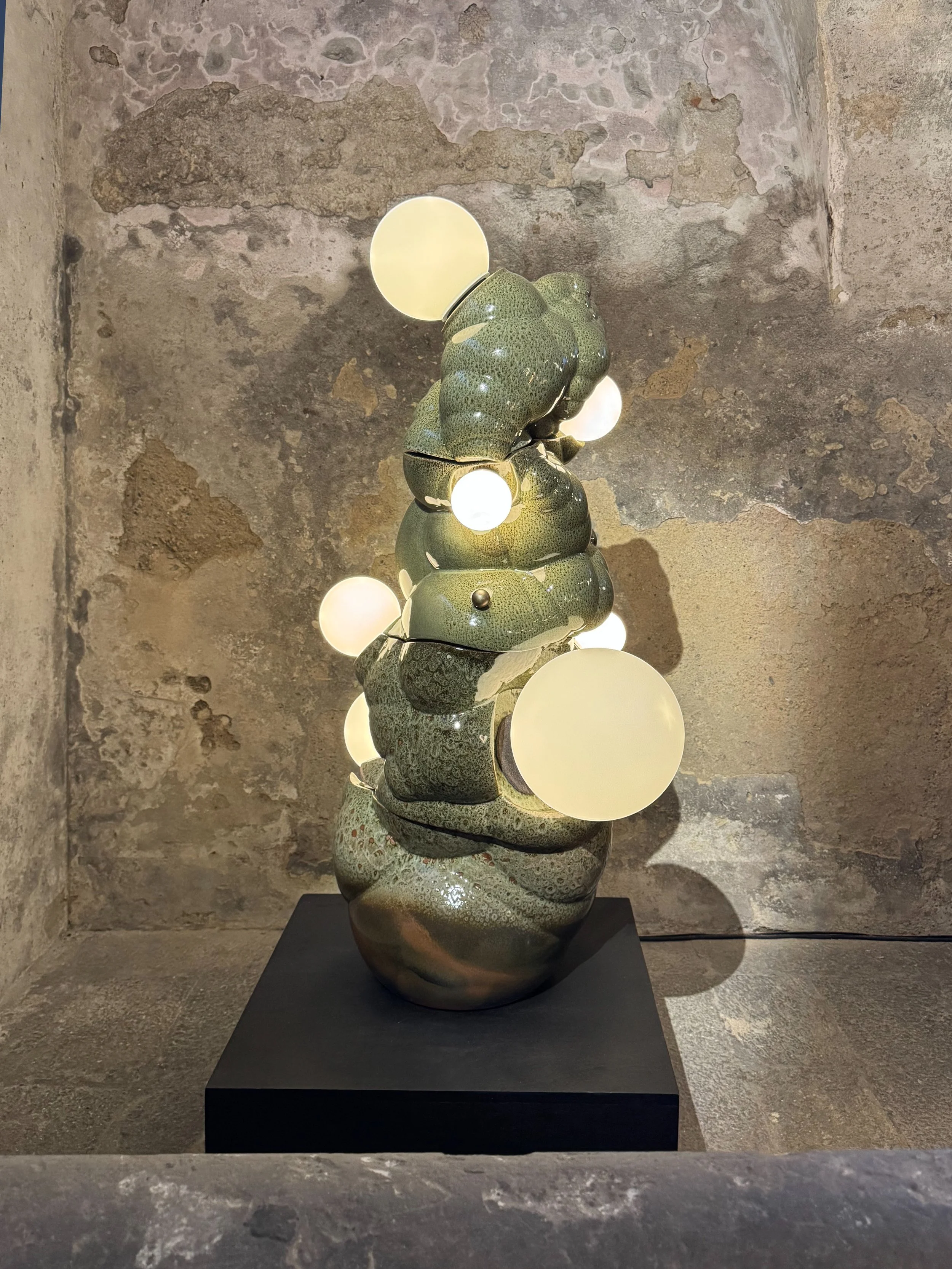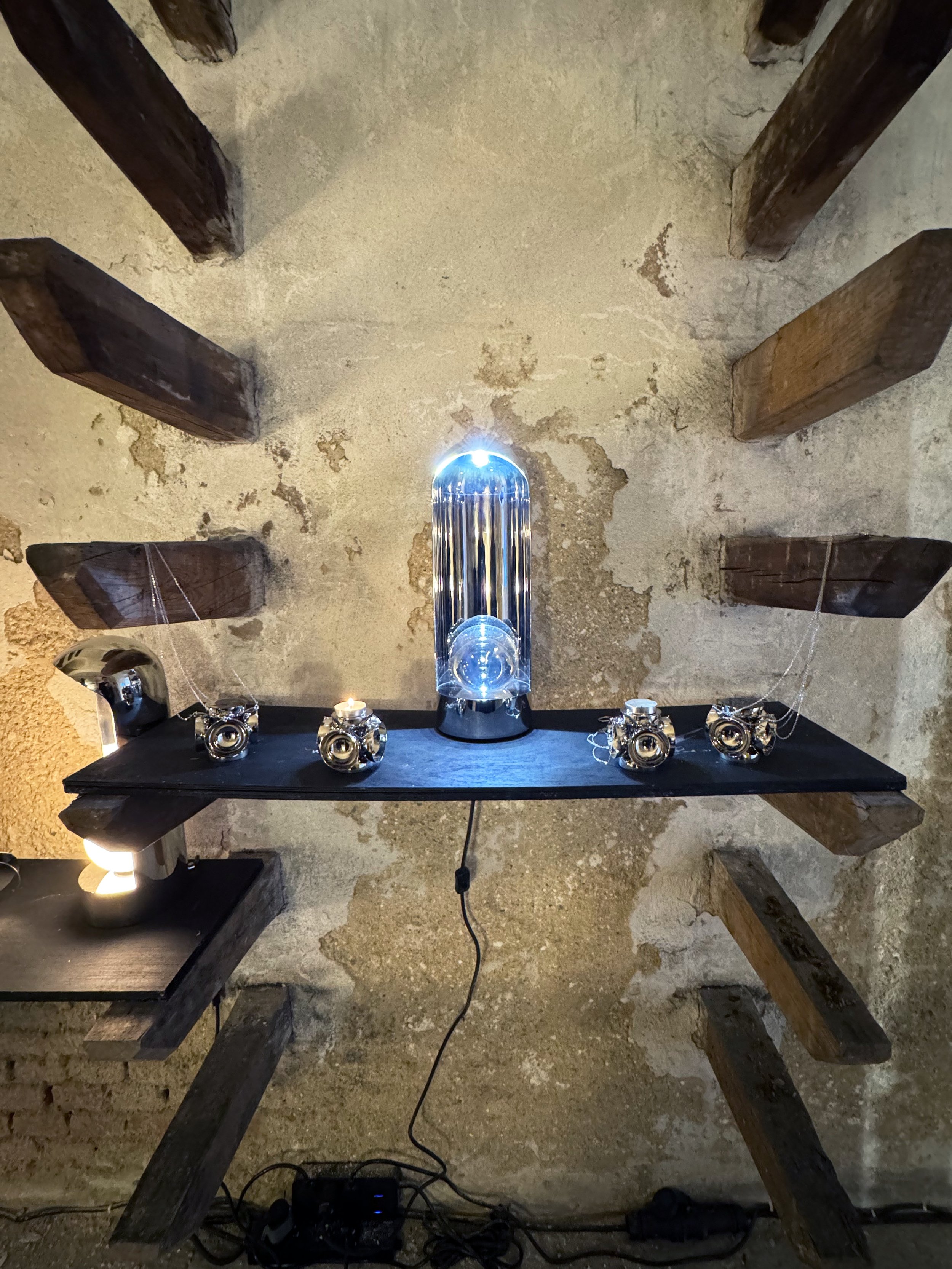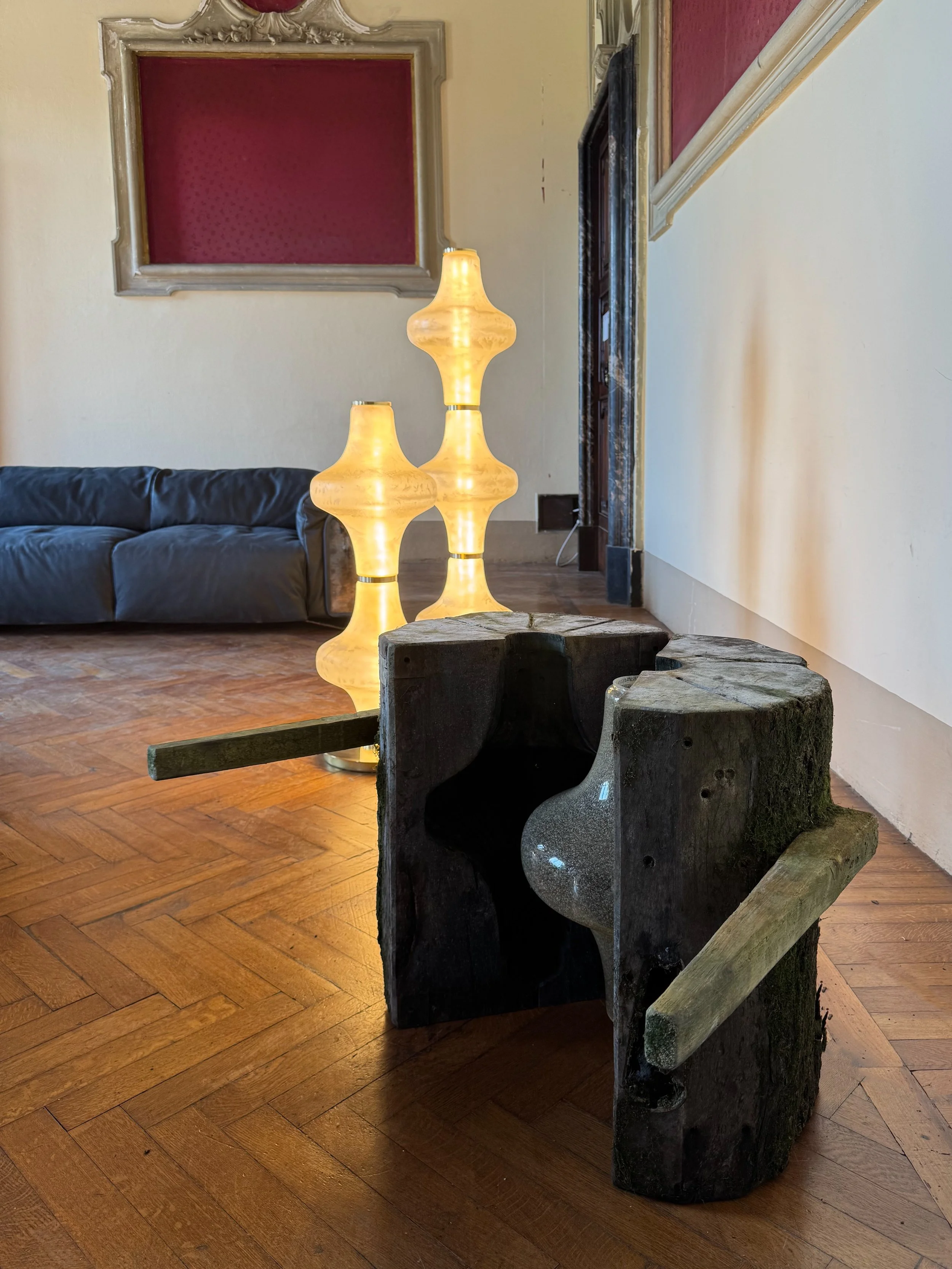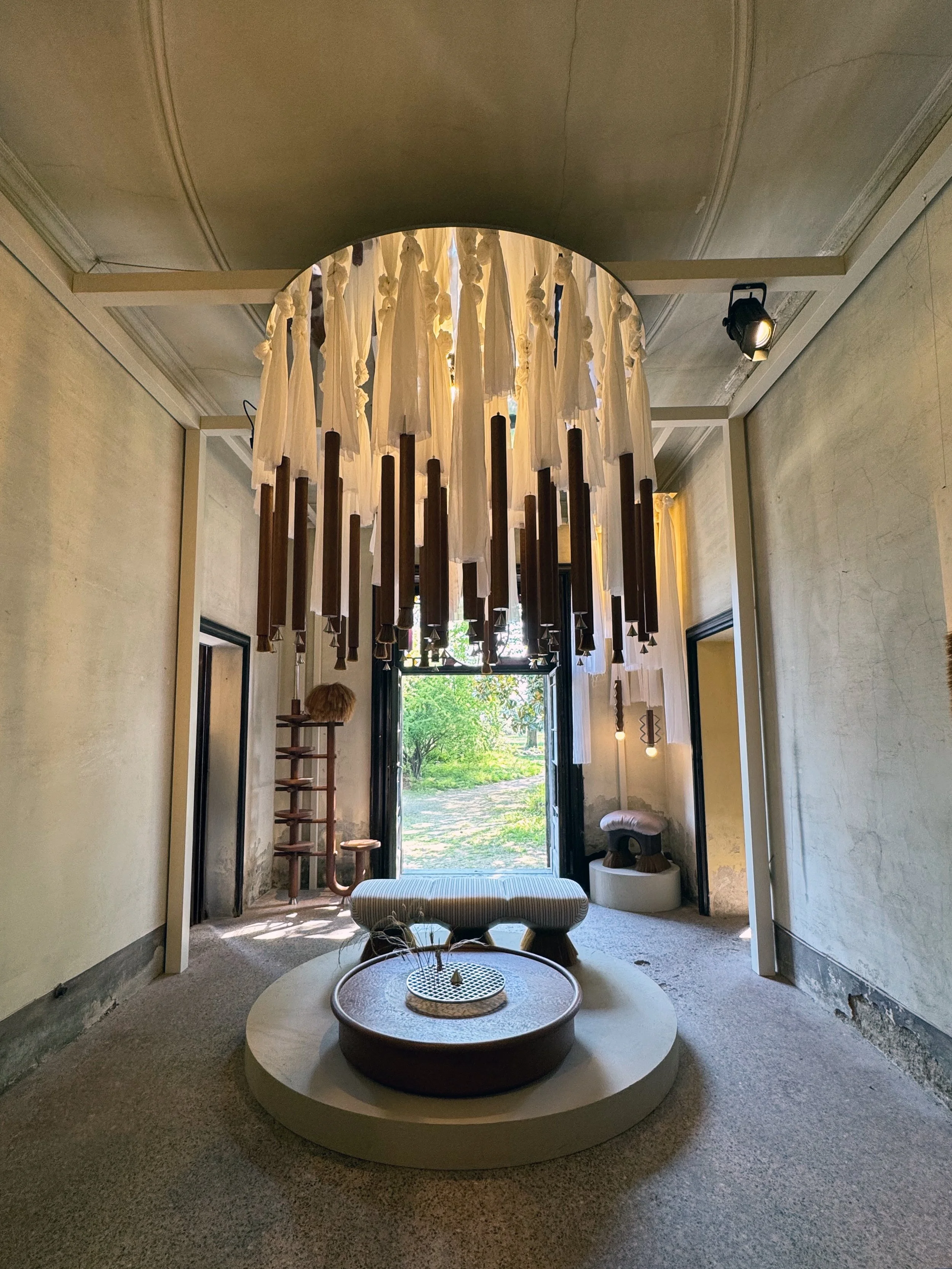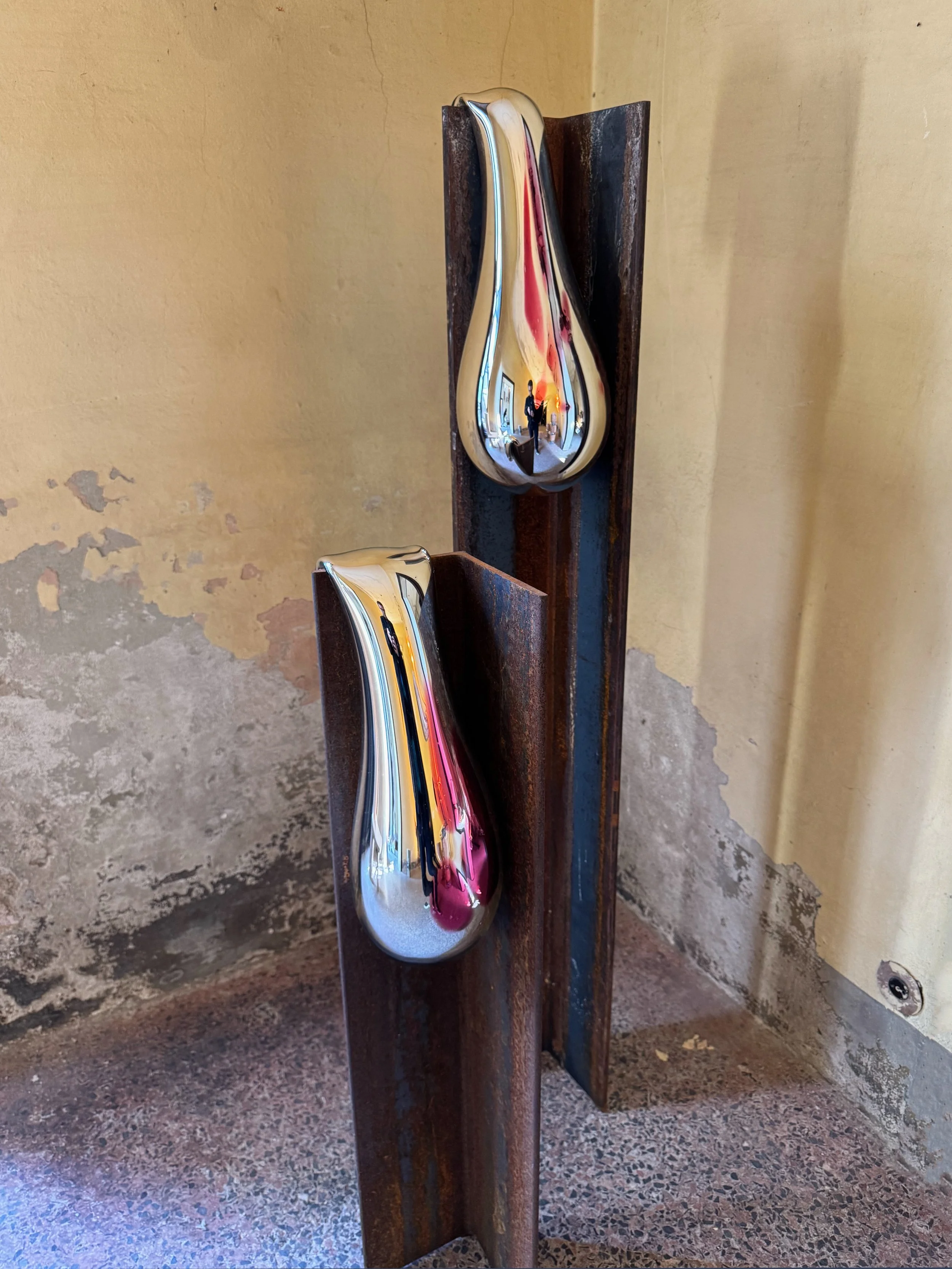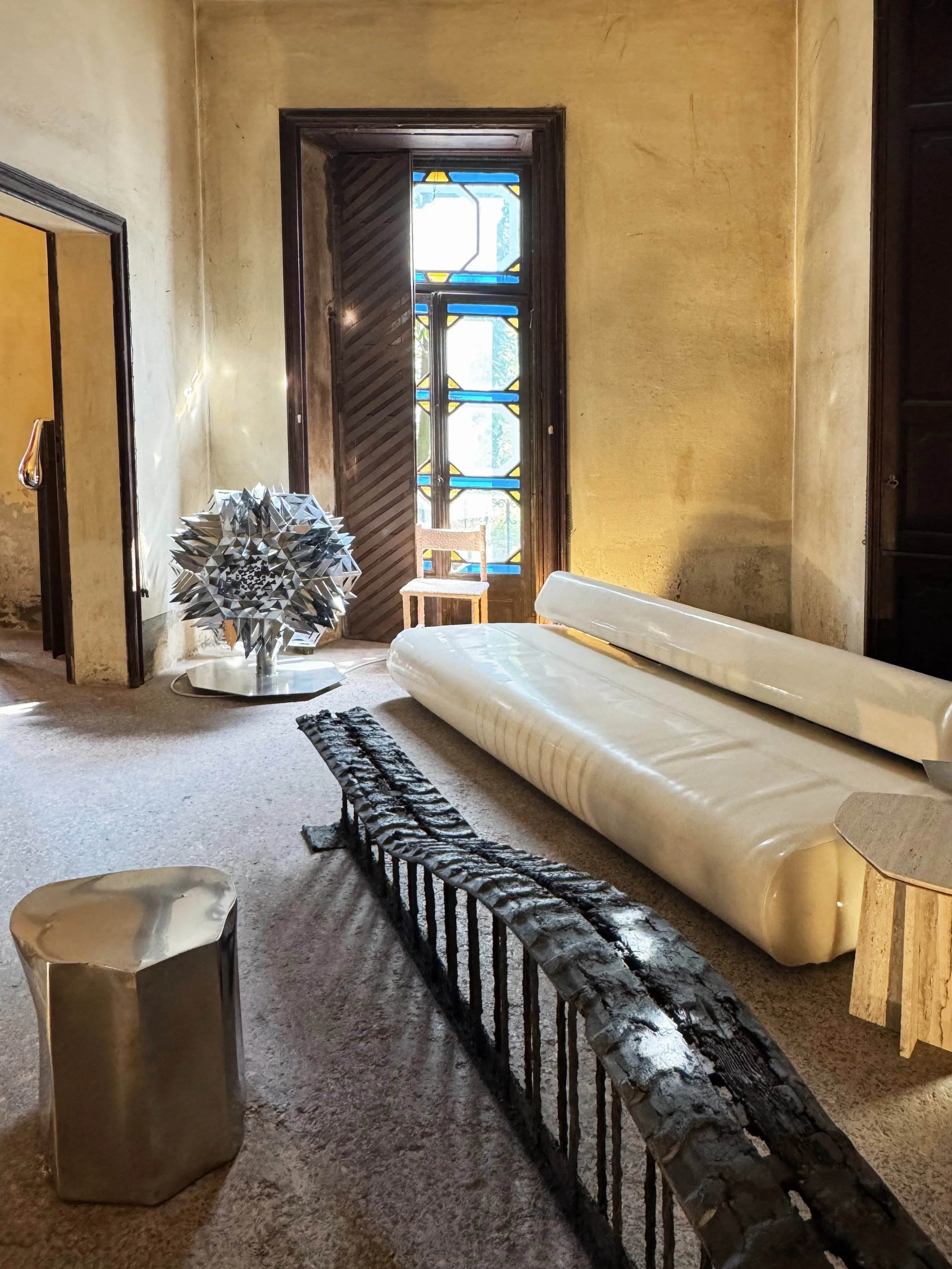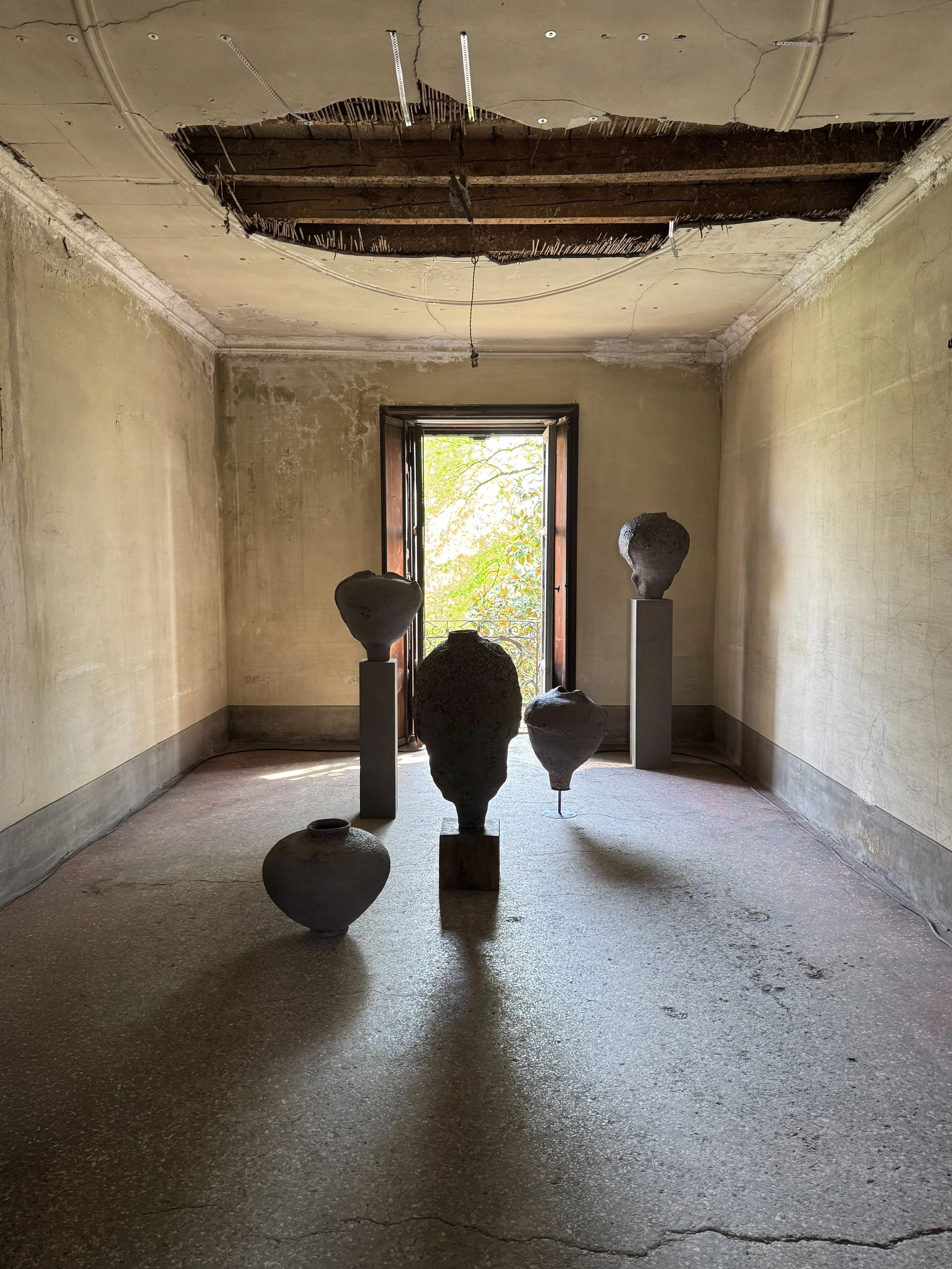Alcova 2025: Villa Bagatti Valsecchi - Rediscovering Milan’s Hidden Histories
Each year during Milan Design Week, amidst the buzz of bold launches and brand spectacles, Alcova offers a rare moment for reflection—a chance to explore the evolving language of design in dialogue with the city’s forgotten past.
Now a cornerstone of the design calendar, Alcova has, since its founding in 2018 by Valentina Ciuffi and Joseph Grima, redefined how design can be perceived, felt, and experienced. Set apart from the rigid structure of traditional trade fairs; this platform is renowned for occupying raw, disused sites—former factories, abandoned hospitals, and historical villas—injecting new life into spaces long left dormant.
This year’s edition was no exception. At Villa Bagatti Valsecchi, one of the four sites for Alcova 2025, designers and brands engaged in a visual and conceptual dialogue with the crumbling grandeur of the villa’s faded frescoes, grand halls, and creeping ivy-covered façades. These are not merely backdrops—they are collaborators in the storytelling. The setting itself becomes part of the narrative, offering a rich, layered experience where design does not simply reside within a space but responds to it.
The magic of Alcova lies in this synergy. It reframes heritage through a contemporary lens by reconnecting Milan’s design community with the city’s lesser-known architectural gems. It is where one encounters cutting-edge materials, radical ideas, and experimental practices—all rooted in spaces brimming with history.
This article features highlights from Villa Bagatti Valsecchi, showcasing some of the most thought-provoking installations from this year’s fair. From speculative concepts to beautifully crafted objects, these works illustrate how designers are pushing the boundaries of form, function, and narrative—while the walls around them whisper stories from centuries past.
In a world where design can sometimes feel fleeting and digital, Alcova reminds us of its deeper power—to inhabit, to preserve, to provoke. And most importantly, to connect us with both place and possibility.













